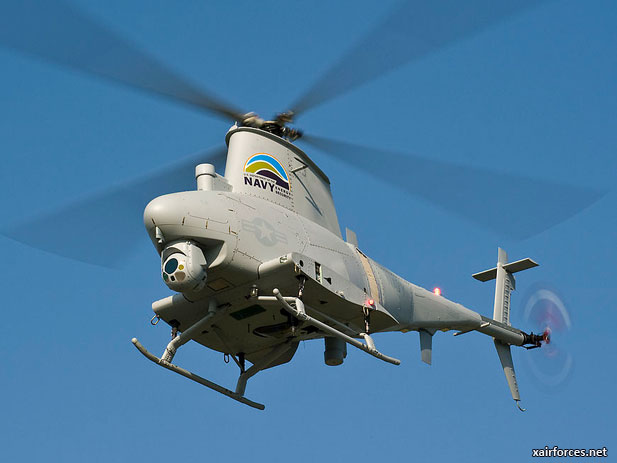
The Drones in our Future

The backyard of my house in the piney woods of southern Chesterfield County is shaped like a half moon surrounded by very tall and skinny loblollies and gum trees. It faces north and can be a good place for aircraft watching.
Since the start of the training mission on April 18, Bulgarian and American pilots have been flying together and working toward the goal of the exercise: to strengthen partnerships, increase interoperability between NATO allies and maintain a standard of excellence.
I live maybe 20 miles as the crow flies from Ft. Pickett, a Virginia National Guard base that is used by military and law enforcement agencies such as Navy SEALs, the Marines, Air Force and Army Special Forces, Canadians, Secret Service, the FBI and Virginia State Police. It’s fairly common to hear the distinctive sounds of military aircraft flying about, such as the muffled roar of Blackhawks, the vibrating thunder of Sea Stallions and, the less frequent “whup, whup” of the old, Vietnam-era Hueys.
So imagine my surprise a few weeks ago when I heard a chopper noise I couldn’t identify. I looked up and maybe 150 feet off the ground was a light grey helicopter that seemed to hover over my property. It was clearly marked “NAVY” and was the size of a ubiquitous civilian Sky Ranger but with one big difference: this aircraft had no cockpit and no pilot.
Weirded out, I went to Wikipedia and noted it was a Northrop Grumman MQ-8 Fire Scout, a drone helicopter that has been in naval service since 2002. Drone aircraft like this one have been the coming thing in aerial weaponry for some time. In the South Asia terrorism wars, they have been responsible for something like 1,700 or so deaths from 2004 to 2010. Of these, 87 were Taliban dead from drone strikes and 32 Al-Qaeda. The Military Channel is chockfull of drone missions from big jets to little model aircraft that a combat unit can toss into the air by hand to find out how many yards ahead their enemy is.
The drone could do much to reshape Virginia’s economy. The state has two major combat airbases, Langley Air Force Base in Hampton and Oceana Naval Air Station in Virginia Beach. For years, they have based the hottest combat aircraft from F-15 Eagles and F-14 Tomcats and more recently F-18 Hornets and F-22 Raptors.
Oceana is responsible for 11,000 jobs in Tidewater and is slated to receive the new F-35C Joint Strike Fighters starting around 2018. Yet there have been clouds forming over Oceana for some time now. Sprawl has grown up around the air base that was rural farmland back in World War II. Pilots have to get past apartment blocks and rows of high-rise tourist hotels to reach the Atlantic a few miles away.
On April 6, an F-18 crashed into some apartments and miraculously killed no one. In 1977, as a newspaper reporter, I saw the aftermath of an F-14 that wasn’t so lucky. It burst into flame as it took off and the pilot and radar officer, fearing they’d slam into a beachfront hotel, sacrificed their lives by turning their hurtling jet onto the tarmac. There wasn’t much left after the fire.
Oceana survived the latest BRAC review although there were attempts to move its instruction operations to more remote Eglin AFB in Florida. Most F-18 pilots get their basic instruction at a California airbase far away in the farmland valley of the central part of that state. Attempts by the Navy department to locate an Outlying Landing Field (OLF) for simulated carrier landings near Oceana in Northeastern North Carolina were shot down by local opposition which is being replicated at other proposed spots near Franklin.
One trend seems certain. Unmanned drones will continue to replace manned aircraft. As they do, the demands upon land-based crews and bases will be much less in terms of cost and local support. That’s good news for the defense budget but bad news for localities that have depended on air bases for jobs for decades. To be sure, Hampton Roads is less dependent upon the military economically than it has been. Drones, however, may not have the glamor of Tom Cruise in “Top Gun” but they hold many advantages.
There is plenty of debate about drones for other reasons. Left wing commentator Rachel Maddow, who is not exactly a military expert, has said that using drones rather than piloted aircraft raises ethical questions because it de-humanizes the effects U.S.-orchestrated combat has on others. Perhaps, but I am old enough to remember when equally pilotless ICBMs aimed at the Soviet Union replaced many piloted B-52s. They couldn’t be recalled once launched, but they would get the job done faster and more cheaply. Luckily they weren’t used.
Anyway, the MQ-8 Fire Scout over my backyard was something of a wake-up call. I guess I’ll be seeing a bit more of them.
Source: Bacon's Rebellion | By Peter Galuszka - Posted on April 26, 2012
Photo: PATUXENT RIVER, Md. (Sept. 30, 2011) An MQ-8B Fire Scout unmanned aerial vehicle (UAV) successfully completes the first unmanned biofuel flight at Webster Field. The aircraft flew with a combination of JP-5 aviation fuel and plant-based non-food source camellia. Fire Scout is the seventh and final aircraft to demonstrate the versatility of biofuel through its use in all facets of naval aviation. (U.S. Navy photo by Kelly Schindler/Released)
(26.04.2012)
|